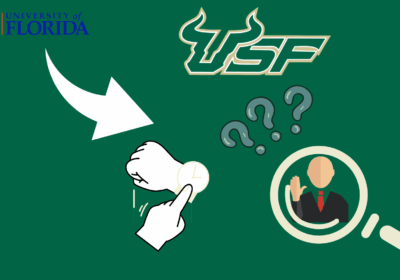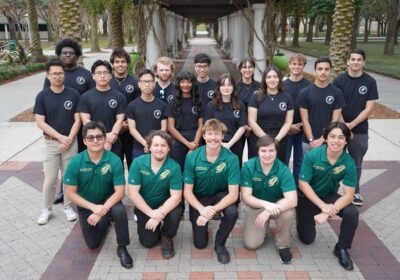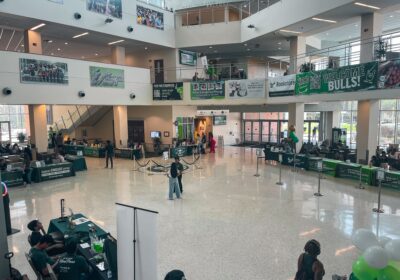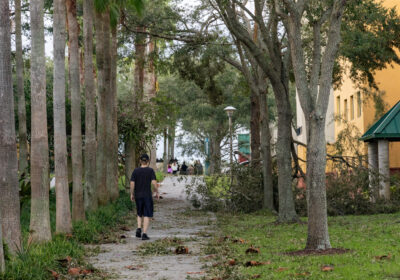BOT approves USF’s 10-year blueprint on key initiatives for university development
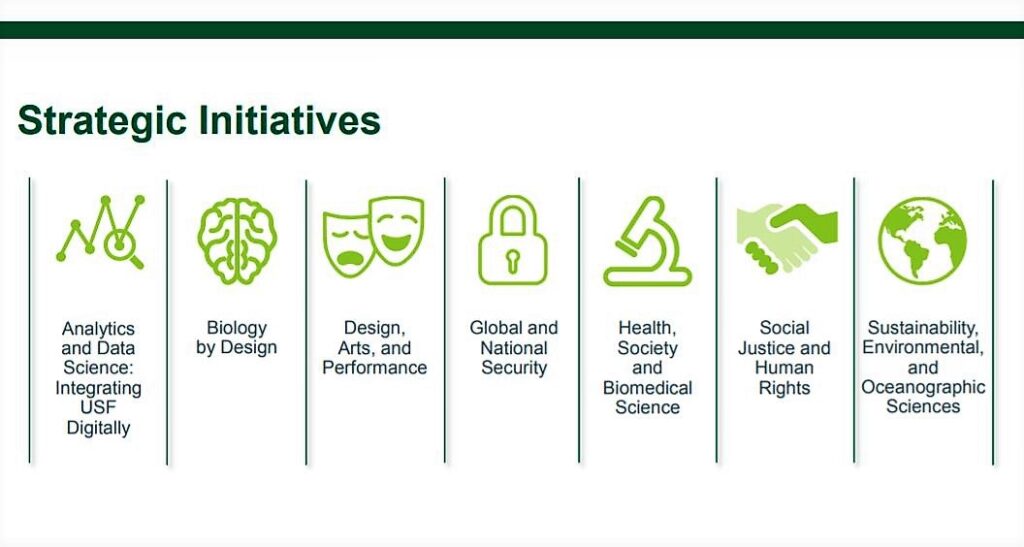
The Board of Trustees (BOT) approved a 10-year blueprint presented by President Steven Currall in their meeting Tuesday, which is the final step in the strategic renewal process that has been in the works since Currall arrived at the university in 2019.
The plan, titled “A Blueprint for a Bold Future: Where Academic Excellence and Opportunity Converge,” outlines key initiatives on which the university will focus in the next 10 years, including becoming eligible for membership in the Association of American Universities (AAU) and a U.S. News and World Report Top 25 public university.
“The idea here is we’re saying this is a vision document. This is a strategic vision trajectory and direction, it is not an operational plan, it is not a tactical plan and it is not a budget model,” Currall said.
“All that is going to be informed by this strategic plan, so we expect each dean and each vice president of each administrative unit to draw upon this strategic plan and use it to inform their own thinking about how to further strengthen their unit.”
The plan awaits approval from the Florida Board of Governors at their meeting Sept. 1, according to Currall.
The initiatives outlined in the plan are divided into seven categories, which include Analytics and Data Science: Integrating USF Digitally; Design, Arts and Performance; Global and National Security; Health, Society and Biomedical Science; Social Justice and Human Rights; Sustainability, Environmental and Oceanographic Sciences; and Synthetic Biology.
Currall said the initiatives are meant to add to the university’s existing commitments in each college and program.
“The idea behind these initiatives is not to move funds away from our current commitments in the colleges, it’s to supplement them and to provide opportunities for synergies that can pull our colleges together,” Currall said. “We’re very excited about each one of these seven initiatives and what they can do to help you move the university forward.”
The Analytics and Data Science initiative is intended to produce graduates and researchers who are apt with data and different kinds of analytics to reimagine the future of their organizations, industries or disciplines, according to the blueprint. It focuses on increasing the technological capabilities of the university and the students, so graduates can improve the surrounding community with the skills they learn.
The university will connect with external resources for the Design, Arts and Performance initiative, giving students heightened access to integrative instruction between the arts and humanities, according to the blueprint.
“Given the prominence of the Tampa Bay region’s economic activity, affinity for sports, destination for entertainment, its numerous museums and other cultural institutions infused with arts and innovation, this initiative draws upon existing strengths that are unique to USF’s communities in Tampa, St. Petersburg and Sarasota-Manatee,” the plan stated.
The Global and National Security initiative will connect the university with the government and military in order to stay on top of progress in security technology, according to the blueprint, in fields like cybersecurity, transportation and infrastructure.
Partnerships will also be the focus of the Health, Society and Biomedical Science initiative, which is outlined as an effort to continue the university’s contributions to the medical field as well as establish research patterns like the collaboration the Tampa campus currently has with the Moffitt Cancer Center.
Attention on equality and social justice in the past year led to the development of the Social Justice and Human Rights initiative, according to the document.
“The Social Justice and Human Rights initiative builds on national imperatives and couples our ability to cultivate business partnerships and research engagement to advance urban development,” it stated.
“USF has been a key partner in the emergence of a burgeoning community innovation ecosystem that is rooted in a concern for social sustainability and human rights — providing an opportunity to collaborate with faculty to ensure that the revitalization of urban communities of color is equitable.”
Within the blueprint, tackling climate change is one of the most pressing issues for the university, and so the Sustainability, Environmental and Oceanographic Sciences initiative focuses on research excellence in domains addressing critical state issues and challenges deriving from urbanization.
Partnering with organizations like the Center for Ocean Technology, Clean Energy Research Center, Center for Urban Transportation Research, Center for Ocean Mapping and Innovation will allow the university to work on these initiatives, according to the document.
While focusing on sustainability, USF will also focus its efforts on biological developments like gene writing and other technological and medical advancements that are propelling biology fields forward, according to the blueprint.
“The Biology by Design strategic initiative will create a network of networks by leveraging existing pockets of excellence in centers and institutes such as Institute for Artificial Intelligence + X, Institute of Applied Engineering, Center for Entrepreneurship, Center for Molecular Diversity in Drug Design, Discovery and Development, Nanotechnology Research and Education Center,” the blueprint stated.
“This will strengthen USF and Florida’s role in the national and global bio-economy.”
The 19-member USF Strategic Planning Advisory Task Force spent over 190 hours developing the initiatives and the blueprint, according to Currall. They held five town halls, did 80 hours worth of listening tours, completed dozens of hours worth of consultations with faculty, staff and community members, created the strategic renewal website and gleaned responses from an anonymous submission box on the website in order to fully encompass what USF needed to focus on.
“I am deeply grateful to professors Charles Stanish and Sylvia Thomas, chairs of the Strategic Planning Advisory Task Force, and all the members of the task force for their exceptional dedication and hard work — nearly 200 hours — to provide a framework for USF’s strategic plan,” Currall said.
Along with the initiatives to improve USF internally, the blueprint also serves as a way for the university to improve in order to better the community, according to Currall.
“A key theme of our plan positions USF as an urban research university, with campuses across our metropolitan region, as an indispensable intellectual engine to address the challenges of the increasingly urbanized American experience,” he said.
The final component of the 10-year blueprint includes 11 internal commitments that will help the university to achieve the seven initiatives, including faculty excellence, student success, staff distinction, diversity, equity and inclusion, operational excellence, athletics, research support and institutional infrastructure, the value of the arts, sustainability and engagement and outreach, according to Currall.
“These are essentially the enablers of all of our academic mission, both in terms of our disciplinary strengths, our colleges and strategic initiatives,” Currall said. “So these are things that we need to continue to invest in, to ensure that we enable broad success across the university.”
Blueprint progress and achievement will be tracked through departments but will also be reflected in annual reports and focused performance monitoring, according to Currall. These measures will be captured in the annual accountability plan, including performance-based funding and preeminence metrics, key AAU indicators, U.S. News and World Report rankings and the president’s annual goals.
Currall said he’s enthusiastic about the approval of the goals and is excited to see all members of the USF community adopt the initiatives in their respective areas.
“We are all responsible and accountable for making this plan a reality. Each one of us will have a role to play,” he said. “So it is very important that we also reflect on how to align our activities, and make sure that we promote alignment across all levels of the university with this plan and this vision.”


